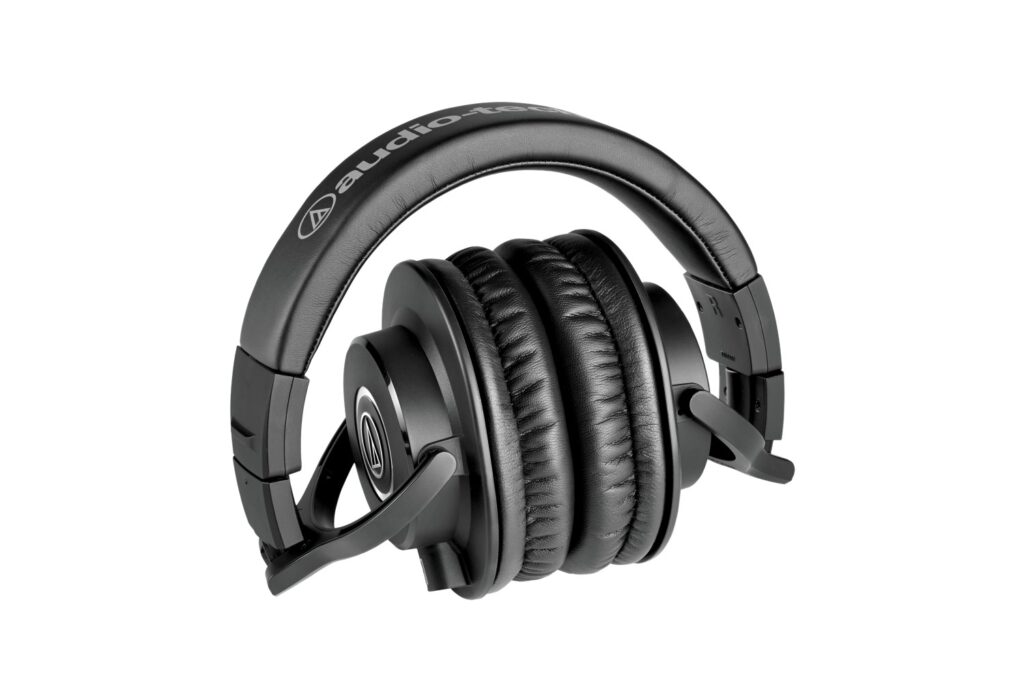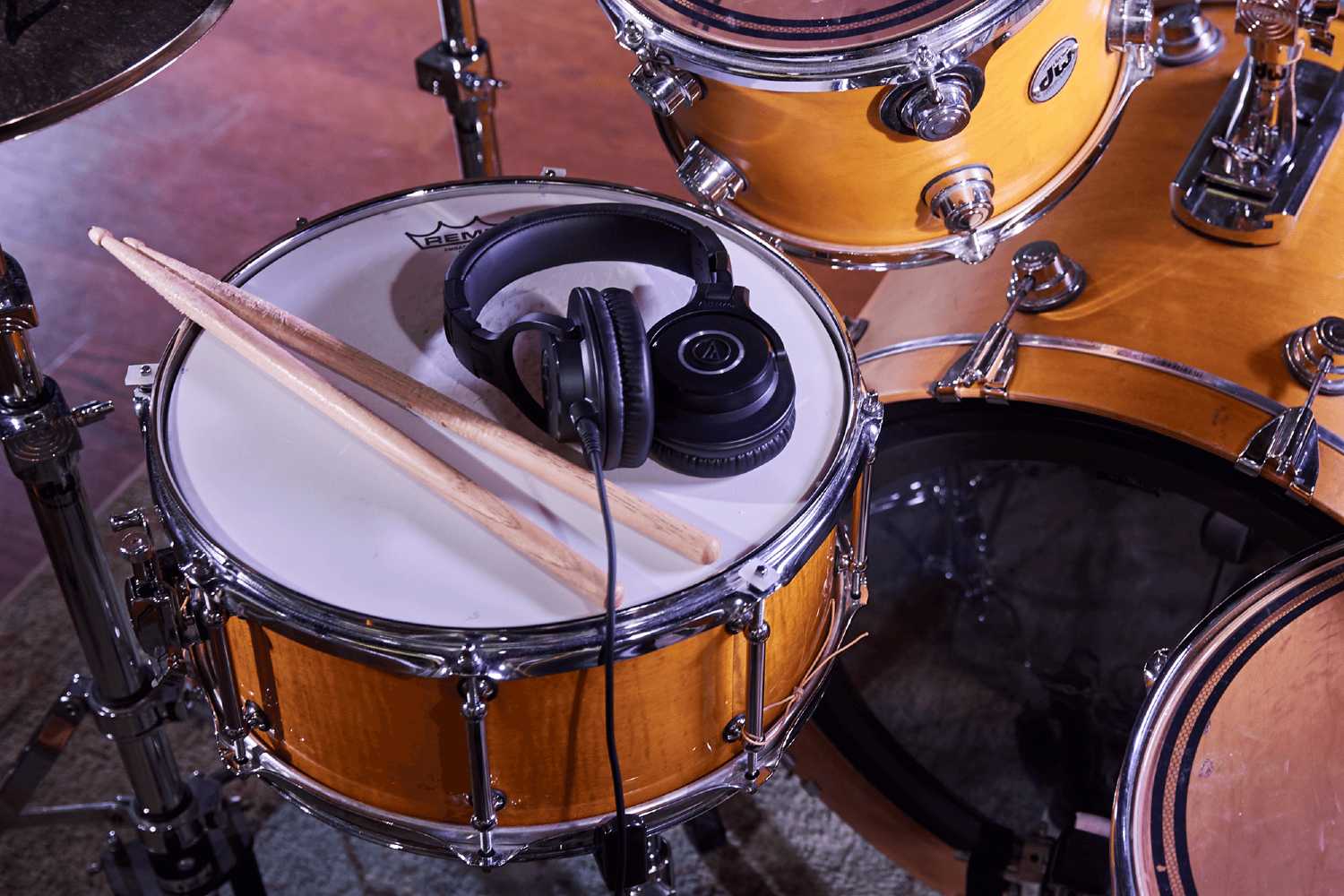Understanding your monitoring situation, both at the tracking and mixing stage, is the single best thing you can do to instantly enhance the quality of your recorded output and that is no exaggeration.
Monitor headphones are a great way to begin the process of ‘fixing’ your monitoring solution. I’m not talking about taking out a second mortgage to splurge on a state of the art, acoustically designed control room either. Rather, something as simple as having a thorough understanding of the important role that headphone monitoring plays in our overall workflow and the nuanced manner in which this affects our creative and technical decision making should be the first point of call for all budding engineers hoping to get a grasp on the craft.
Monitor headphones
It’s an important lesson to learn, serving as the perfect entry point for many of the fundamental concepts and considerations surrounding the recording studio that will inevitably follow us throughout our working life.
Forget what you know …
The minute you walk into the studio, you are no longer a civilian. You may notice some pieces of gear that bear a passing resemblance to household items or home Hi-Fi equipment (the likes of which you may have encountered in the outside world), but rest assured, if it’s in a studio, its purpose has since been reimagined and it’s internal circuits reconfigured to fit the context of our recording workflow, all with a very specific end goal in mind. Their presence in this most holiest of spaces must always be justified at the technical level.
In studio parlance, speakers become monitors, computer screens become monitors, headphones become monitors. Why? Because as studio engineers, we are in the business of creating and crafting art and content, rather than consuming it, hence the need to constantly ‘monitor’ what is being committed to our medium of choice in order to make informed technical and stylistic decisions and get our audio where it needs to be.
Studio monitor headphones
This is one of the biggest differences between consumer listening headphones and headphones specifically designed for studio monitoring; one is voiced to give you the most enjoyable listening experience possible and leave you with a big smile, the other is designed to seamlessly fit into a recording chain at both the physical and auditory level, in turn extracting the best and most reliable results possible.
It’s for this reason that monitoring headphones tend to have their own technical requirements very different to that of the average consumer headphone you are probably used to.

A prime example of this kind of professional headphone is Audio-Technica’s other utilitarian classic, the ATH-M40x @ RRP: $199 which has developed a reputation as one of the best value-for-money professional monitoring headphones out there—perfect for the budding engineer who is finally starting to think like an engineer. It’s also for this reason that the M40x comes highly recommended as the defacto headphone for the Audio education industry, with many institutions recommending it as an affordable entry point with which to work through their course’s curriculum. What’s more – the ATH-M40x are collapsible for easy transport, while also having replaceable cables available. That’s a plus for both music makers and educators who need a reliable and fixable monitoring solution!
It all starts with Isolation …
So what is it about the M40x that makes it such a perfect example of utilitarian, lunch bucket monitoring headphone?
Well for starters, the M40x is a classic example of a closed back ‘over-ear’ headphone, a configuration that has dominated studio headphone design for over 30 years.
Like their name would suggest, the ‘closed back’ design found on this style of headphone means that the sound is contained within the earcup, providing the maximum amount of isolation between our headphone output and any live microphones that may be in the vicinity, which is ideal for allowing for the most pristine capture possible at the tracking stage. This separation also goes the other way, with the one-two punch of the close-back and over ear design serving to better isolate our room sound (a guitar amp for example) from our monitored sound (our headphone output).
This is particularly important for player-engineers or people recording without the aid of a control room, as it means we are able to get a decent understanding of what we are capturing and where it sits in relation to the rest of the composition in real time. This also means we can hone sounds in context at the source, whilst also allowing us to capture higher quality performances and in the case of vocalists or presenters, better mic technique, all of which make for better recordings.
Be like water …
In terms of voicing, most monitoring headphones tend to be tuned flat in order to provide the most transparent, accurate sound possible. This is because unlike headphones designed for general listening, monitoring headphones are designed as a like-for-like indication of what our audio will sound like across the broadest possible spectrum of playback devices. This means they require a driver that is both capable of reasonably low frequency extension whilst also being fast enough to accommodate detailed transient material and diction in a way that is clear and precise, and with enough sheer output to be heard in some particularly loud working environments (like standing in the middle of a live room with a full band playing—something that the M40x excels at!)
Engineers are also far more reliant on their headphones than the average listener, so things like build quality, stowability and replacement parts are also important considerations when we are talking about what makes a good monitoring headphone.
Better Never than Late …
This brings us to our next primary difference between consumer and professional monitoring headphones, the presence of Bluetooth in the consumer space and why this doesn’t always fly in the studio. Bluetooth is great for everyday life. It frees up the hands, it’s convenient, but as engineers we are about audio quality first and foremost (often at the expense of convenience) and the small but noticeable latency introduced by bluetooth headphones is often enough to throw a performer off or create phase cancellation between our monitoring signal and the leakage surrounding it, thereby making for less accurate decision making and translatability. It’s also important to take into account the kind of digital compression required for most Bluetooth codecs and how this may compromise our ability to monitor truthfully in the critical studio environment. This is why in the studio, wired reigns supreme.
This is just some examples of what separates monitoring headphones for tracking with your average set of cans (and we haven’t even broached on the topic of reference headphones for Mixing, which is a whole other conversation unto itself.) Suffice to say, monitoring is one of the headiest and most important topics in all of studio practice and with a solid set of monitoring specific headphones (like Audio-Technica’s M40x), you are well on your way to building the kind of solid foundation that can only translate to better sounding audio.
Keep reading about Audio Technica’s M40x here.

